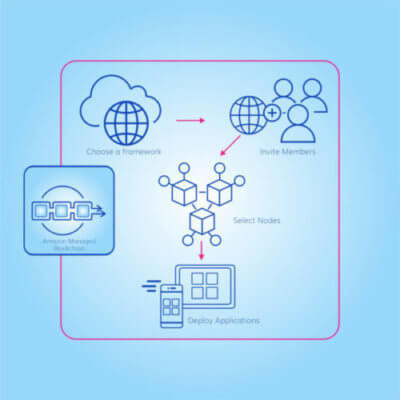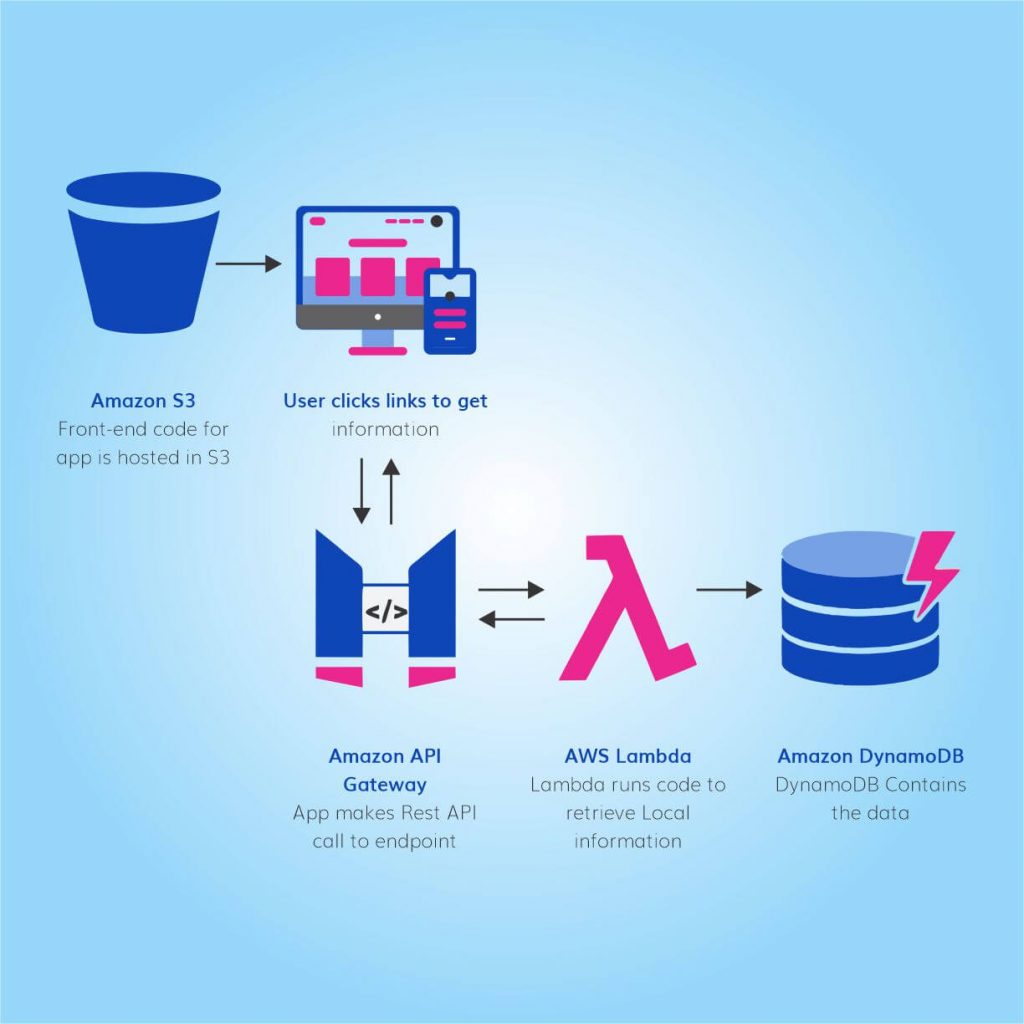AWS Lambda Performance Optimization: Top 12 Sure Shot Tips and Practices
For serverless applications, AWS Lambda has become a widely used deployment pattern. It enables to run of backend code on AWS services without managing infrastructure. The code you run on AWS is called functions, and it allows you to own functions and pre-made functions. You can also set up events as per your convenience, and AWS Lambda will run it automatically.
If you are worried about the server to handle the execution of your large and heavy weighted applications, don’t worry about AWS Lambda’s evolution- it lets you implement your code without servers.
In addition to implementing a serverless environment for running larger codes, the AWS Lambda performance optimization helps create the logic for workload management and integration of events. There is a need for zero administration of any third party or external packages to be implemented as a part of the backend process while utilizing the Amazon Lambda.
All you need to do is upload the compressed folder containing the code and Lambda will automatically recognize the execution and allocate the processing power accordingly, which is compatible with any amount and type of incoming traffic.
To know more about Amazon Lambda, visit this link

A Comprehensive Guide To AWS Cost Optimization
Don’t miss a chance to know how we help our clients save up to 30% on AWS bills. Download your ebook now to get benefitted, and stop overpaying by following our best practices.
AWS Lambda Performance Optimization and its Best Practices for 2021:
Some of the factors that affect Lambda’s performance can be the size of the memory, runtime environment, coding languages, concurrent processes, application start time or load time, optimization of the code, etc.
AWS Lambda performance tuning helps to optimize the above-mentioned factors, which can be achieved by looking after some of the following practices while executing your code. Let us discuss these practices in brief:
1. Keep the Lambda handler separate from the core logic:
This practice would help the developer in increasing the functionality of unit-testing in the code.
2. Make the maximum use of the reusability of the execution environment so that it can increase the function performance:
When there is more number of invocations to a particular instance, initialize those instances such that the same instance can be reused multiple times, and hence there is a remarkable reduction in the execution time of the function, thus increasing the performance.
Also, as the instance is being invoked multiple times, the issue of data leakage is possible. Hence, the developer recommended that the developer not utilize the run time environment for user data storage, event handling, etc., for security implications.
3. Create persistent connections with the directories:
There is a provision that Lambda might eliminate the idle connections with the directories in a given time. Hence, when a developer tries to invoke these idle connections, he might face an error. Hence it is recommended to create persistent connections with the libraries and directories. You can use the keep-alive feature present in the runtime environment to maintain the persistency of its connections.
4. Utilize the availability of the environment variables:
If there is a need to pass the operational parameters in a function, then it is recommended that the developer uses the environment variables present in the runtime.
For example, while coding with Amazon S3, one can create the environment variable as the name of the S3 bucket, instead of rigorously coding it.
5. Have control over the dependencies:
There are multiple libraries available in the package for Amazon Lambda in its execution environment. Also, periodically, Lambda introduces certain updates in its features and functionalities to provide its users with a set of features with the latest trends and technologies.
With the periodic introduction of those updates, there is a possibility that certain functions present in Lambda also change. Hence, this might also result in dependency on some functions. To overcome this, it is advisable to include all the dependent functions into a single package during the deployment phase.
6. Limit the size of the package to be deployed:
Design your package of functions according to what is required in the runtime environment. This helps in reducing the time taken to deploy the package that initially needs to be downloaded and utilized when the functions in the package are invoked.
For example, it is advisable not to upload the whole library for the AWS environment for deploying the functions of the applications built in Java or .NET Core. Instead of this, the developer can select only the dependent modules of the code that pick up only the AWS environment’s required elements.
7. Spend lesser time in unpacking the packages that need to be deployed:
Instead of creating larger class files in Java, for example, it is recommended that the required packages and functions be included in the files with the .jar extension, located in different libraries or directories. This results in faster execution of the Java application.
8. Make the dependencies among the functions less dependent:
Generally, a developer chooses the best and the latest framework introduced in the market to execute his applications, no matter how heavier they are. So, in Lambda, the developer should choose the lightweight framework based on his requirements for the applications.
Hence, the simpler the framework used to execute the code, the lesser is the dependency among its elements and components in the libraries.
9. Use the recursion in the code as much less as possible:
Recursion can be defined as the function that calls itself, and this continues till certain criteria are fulfilled. This might sometimes result in the unnecessary invocations of the functions and hence increases the time and space complexity of the functions.
This also increases the cost of the execution of the function in terms of processing power. Not only this, but even if there is a slight change in the code, it may affect the complexity and dependency of the function drastically.
10. Test the performance of your Lambda Function:
This activity is important as it ensures the developer picks the memory’s optimized configurations in terms of size. If there is a slight increase in the size of the memory, it may also affect the CPU computation power that is made available for executing your code.
You can determine the memory usage by a function based on the number of invokes, and it can be viewed using the AWS CloudWatch Logs tool.
11. Carry out the Load testing for the Lambda function:
The Lambda function’s load testing is necessary to be carried out so that the developer can know the timeout value of the function. This also gives an estimation of the running time of the function the developer has invoked, and based on this; the developer can come to know about the complexities and dependencies present in the function.
12. Remove the Lambda functions once you stop using them:
The practice of removing the unused Lambda functions enables the developer to optimize the deployment package’s size to be executed in the runtime. This will reduce the package size and also decrease the dependencies.
To know more about optimizing the performance of Amazon Lambda, visit: this link
Conclusion:
In this blog, we discussed the key practices that will surely help you to increase your serverless applications’ performance by optimizing Lambda. To ensure your app’s hassle-free performance, you should continually monitor, log, trace, and debug. You can also take the help of AWS CloudWatch for automated metrics-based monitoring. To identify the issues and debug them, you can use AWS X-Ray for the end-to-end tracing of Lambda functions.
If you are looking for a helping hand to achieve favorable results by pinging functions, integrating with third-parties, and troubleshooting performance issues, then get in touch with AWS cloud consulting partner to make more data-driven decisions.
Contact Us
We’d Love to Help You
Get in Touch
- Fill out a request form. Please brief your requirements in-detail. The more we know about your amazing idea, the better we will guide and assist you with project time and resources
- We’ll reach out to you on priority to discuss next steps in the meantime please check out our case studies and insights.
- We look forward to collaborating with you to bring your idea to the market sooner than the traditional route.
Related




